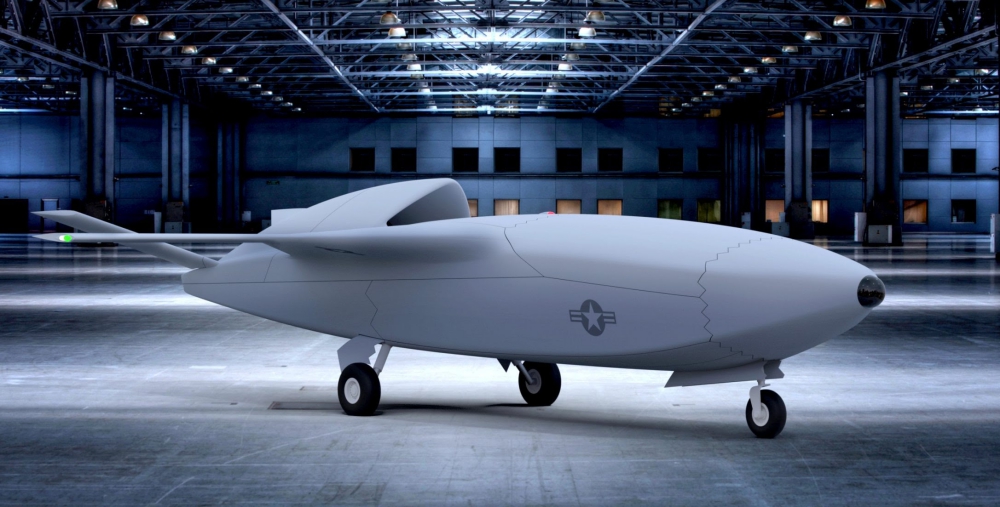The Department of the Air Force has submitted a $4.2 billion unfunded priorities list to Congress for fiscal 2021, which includes roughly $3.2 billion for the U.S. Air Force and $1 billion for the fledgling U.S. Space Force.
The request, which is significantly higher than the extra $2.8 billion the Air Force wanted in fiscal 2020, asks for an additional $1.3 billion for 12 more F-35 Joint Strike Fighters and long-lead support items. If Congress approves that addition, USAF would buy 60 F-35As in 2021.
The Air Force asked for 60 fighters total—48 F-35As and 12 F-15EXs—in its 2021 budget request released earlier this month, even though it has repeatedly said it needs to buy 72 fighters a year to stop its fighter force from aging.
The Space Force’s first unfunded priorities list covers new technologies, warfighter development, asset protection, and fielding additional systems.
In recent years, the Air Force has frequently relied on Congress to bolster its F-35 buy. It also asked for a dozen Joint Strike Fighters in its 2020 unfunded priorities list and 14 F-35s in its massive $10.7 billion UPL for 2018.
The UPL highlights three other investment areas the service is eyeing to advance the “Future Force We Need,” the newest version of the “Air Force We Need” plan rolled out by former Secretary Heather Wilson:
- Advanced weapons ($228 million)—Includes $52 million to accelerate GPS M-Code receiver development for greater cybersecurity, plus more for “robust offensive cyber operations.”
- Future ranges ($190 million)—Includes $116 million for rapid prototyping of the Advanced Radar Threat System Version 4, which would help the Air Force prepare to face threats from other advanced militaries; for operational training infrastructure at Nellis Air Force Base, Nev., and Hill Air Force Base, Utah; for growing the number of Airmen assigned to the Cyber Formal Training Unit from 1,400 to 3,500, and for improving cyber simulation.
- Advanced technologies ($115 million)—Includes $25 million for the Skyborg autonomous unmanned combat air vehicle, $35 million for Golden Horde prototyping, and $55 million for the classified “Emerging Technology Concept Operational Prototype.”
Skyborg is envisioned as an unmanned wingman that will follow manned fighters into combat and provide strike, intelligence, or lookout support. Artificial intelligence would help the aircraft operate autonomously. The XQ-58A Valkyrie is one option that could serve in this role, though USAF officials have said other platforms also are under consideration.
Air Force acquisition chief Will Roper told reporters at the Pentagon on Feb. 21 there is still “huge enthusiasm for Skyborg,” but the service opted not to include it in 2021 budget request because funding is available through the Air Force Research Laboratory to keep the program going for now.
He said Valkyrie will fly in the service’s next Advanced Battle Management System experiment in April and he “fully expects that we’ll see an attritable drone program called Skyborg in our ’22 budget.”
“It’s high on the list, and if it makes the ’22 budget, then we know we’ve got the funds in AFRL and our … prototyping plan to keep it alive, keep it moving, work on the artificial intelligence aspect,” Roper said.
USAF also requested $1.3 billion for infrastructure, of which $589 million would go to military construction and $736 million would fund facility sustainment, restoration, and modernization.
This includes three new construction projects:
- $132 million for a new, multi-story Ground-Based Strategic Deterrent software sustainment center at Hill
- $96 million for a high-bay maintenance hangar for the B-21 at Ellsworth Air Force Base, S.D.
- $25 million for a consolidated squadron operations and aircraft maintenance unit facility to beddown the F-35 at Fort Worth Joint Reserve Base, Texas
The list also includes funding for six existing MILCON projects for the Active duty and Air National Guard.
Space Force
The Space Force’s first UPL also laid out four areas to advance the future force:
- Advanced technologies ($137 million)—Includes $30 million to accelerate payload development for the Navigation Technology Satellite-3.
- Develop space warfighters ($30 million)—Expands access to the virtual training range and adds two new courses to the curriculum, increasing USSF’s capability to “develop the space warfighters essential to winning in an increasingly contested and congested domain.”
- Protect and defend assets ($211 million)—Includes $149 million for the Space-Based Infrared System program, $40 million to upgrade missile defense and warning, and $22 million for next-generation transportable electronic warfare and next-generation laser deconfliction.
- Field robust enabling capabilities ($541 million)—Includes $175 million to accelerate enhanced satellite communications capabilities, $110 million to rapidly field new space situational awareness capabilities, and $255 million to procure launch for the sixth and seventh GPS III satellites.
Photo: Artwork courtesy of AFRL
Source: Air Force Magazine

